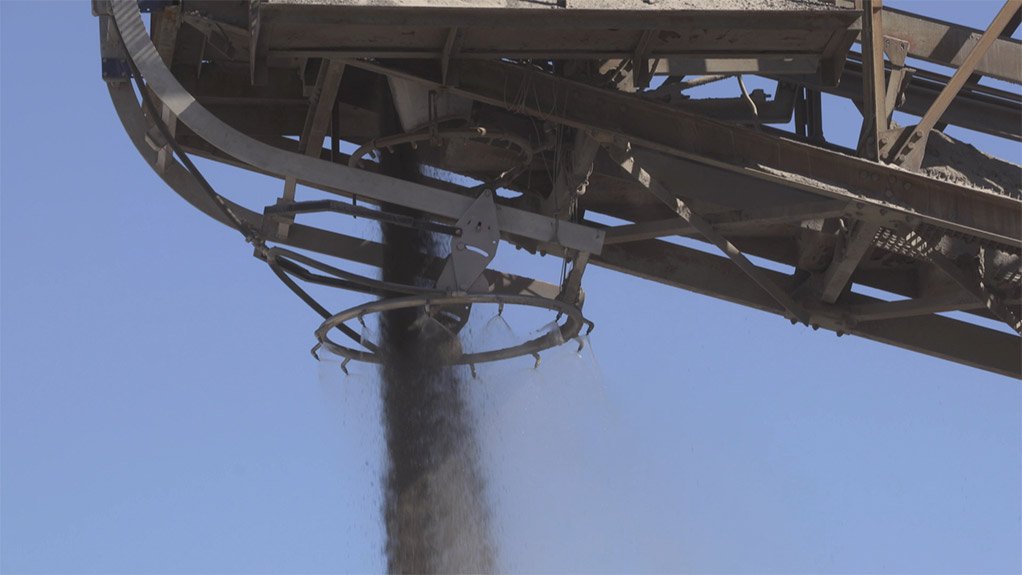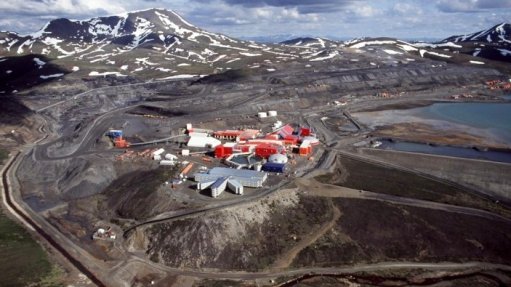Mine maintenance affected by falling commodity prices



LOURENS JANSEN VAN RENSBURG Mines are operating at dangerous margins, as costs and savings targets need to be achieved if they are to continue operating
DUST SUPPRESSION Mines have to overcome several challenges when reducing windswept dust on and around their tailing dams and open soil areas
Unstable commodity prices have placed mines under pressure to produce at the same rate while decreasing their operational costs, highlights environmental management company I-CAT Environmental Solutions director Lourens Jansen van Rensburg.
He tells Mining Weekly that cost reductions are the biggest challenge facing the maintenance industry – mines are operating at dangerous margins to achieve target costs and savings to keep operating.
Coal and iron-ore mines have been particularly affected by falling commodity prices and form a large part of the company’s client base.
Subsequently, the company has developed an adaptive capacity regarding its service offering for established clients, Jansen van Rensburg says, noting that coal- and iron-ore-producing clients have often opted to renegotiate current service contracts to secure lower prices, with maintenance downscaling also common.
In spite of this, he says, the company is well geared to absorb commodity price fluctuations, adding that many clients have agreed to extended payment terms of between 30 and 90 days to ease cash flow restrictions.
“The maintenance and compliance aspects of mining operations cannot be neglected during these down cycles and mines frequently look for better services, technologies and products at lower costs,” says Jansen van Rensburg. He adds that I-CAT is hunkering down to ride out the cycle to its eventual upturn, with the company’s structured contracting with clients accommodating price increases once commodity prices improve.
I-CAT’s product offerings consist of numerous solutions geared towards developing safer, healthier and more efficient mining environments, states Jansen van Rensburg. “Our dust suppression systems and products are certified green and extremely effective in controlling particulate matter and dust particles in mining and industrial environments.”
He adds that the company’s fire-suppression solutions are being implemented at mines and smelters across the country and that the solutions are “self-detecting and/or manually operated, which ensures operator safety in harsh environments”.
Mines have to overcome several challenges in reducing windswept dust on and around their tailings dams and open soil areas, explains Jansen van Rensburg, pointing out that I-CAT offers a solution through its tailings dam solution (TDS) 2005, an environment-friendly liquid gel used for the suppression of dust on tailings dams and large open soil areas.
Jansen van Rensburg states that the major dust control challenge faced at mine sites involves preventing wind from disbursing the very fine dust eroded from the edges of tailings dams and open soil areas. This action causes dust clouds that can be swept into the atmosphere and settle on populated and agricultural areas.
The solution is the application of a matrix blend of a patented anionic surfactant and other environment-friendly binding products. Jansen van Rensburg explains that the “unique” properties of this liquid gel allow the product to penetrate into the surface of the dump to create a durable bond, binding the loose aggregate by forming a crust. “This crust remains porous, allowing rainwater to penetrate, yet will not be washed away under normal precipitation.”
I-CAT has long-standing service contracts with mines of large mining houses, including Anglo American, Sibanye Gold, Assmang, African Rainbow Minerals and South32.
He notes that the company has designed, built and installed a large dust suppression system at the plant and processing area of a major iron-ore mine in South Africa. The system consists of a specialised nozzle system that atomises water droplets for effective dust capturing and suppression. I-CAT received the distribution rights for this technology in Africa in 2014. The system is so effective, boasts Jansen van Rensburg, that the mine site at which the system has been implemented shuts down all operations should the system go offline for biannual maintenance. The dust becomes unbearable when the system is not active, he explains.
Article Enquiry
Email Article
Save Article
Feedback
To advertise email advertising@creamermedia.co.za or click here
Announcements
What's On
Subscribe to improve your user experience...
Option 1 (equivalent of R125 a month):
Receive a weekly copy of Creamer Media's Engineering News & Mining Weekly magazine
(print copy for those in South Africa and e-magazine for those outside of South Africa)
Receive daily email newsletters
Access to full search results
Access archive of magazine back copies
Access to Projects in Progress
Access to ONE Research Report of your choice in PDF format
Option 2 (equivalent of R375 a month):
All benefits from Option 1
PLUS
Access to Creamer Media's Research Channel Africa for ALL Research Reports, in PDF format, on various industrial and mining sectors
including Electricity; Water; Energy Transition; Hydrogen; Roads, Rail and Ports; Coal; Gold; Platinum; Battery Metals; etc.
Already a subscriber?
Forgotten your password?
Receive weekly copy of Creamer Media's Engineering News & Mining Weekly magazine (print copy for those in South Africa and e-magazine for those outside of South Africa)
➕
Recieve daily email newsletters
➕
Access to full search results
➕
Access archive of magazine back copies
➕
Access to Projects in Progress
➕
Access to ONE Research Report of your choice in PDF format
RESEARCH CHANNEL AFRICA
R4500 (equivalent of R375 a month)
SUBSCRIBEAll benefits from Option 1
➕
Access to Creamer Media's Research Channel Africa for ALL Research Reports on various industrial and mining sectors, in PDF format, including on:
Electricity
➕
Water
➕
Energy Transition
➕
Hydrogen
➕
Roads, Rail and Ports
➕
Coal
➕
Gold
➕
Platinum
➕
Battery Metals
➕
etc.
Receive all benefits from Option 1 or Option 2 delivered to numerous people at your company
➕
Multiple User names and Passwords for simultaneous log-ins
➕
Intranet integration access to all in your organisation



















